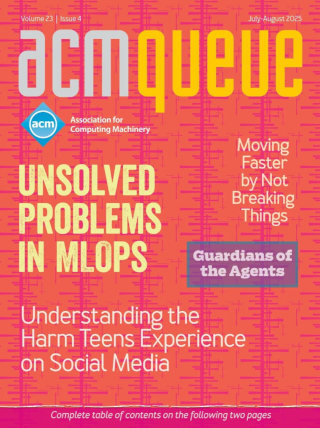
Space Time Discontinuum:
Combining data from many sources may cause painful delays.
Back when you had only one database for an application to worry about, you didn’t have to think about partial results. You also didn’t have to think about data arriving after some other data. It was all simply there. Now, you can do so much more with big distributed systems, but you have to be more sophisticated in the tradeoff between timely answers and complete answers.
Blockchain Technology: What Is It Good for?:
Industry’s dreams and fears for this new technology
Business executives, government leaders, investors, and researchers frequently ask the following three questions: (1) What exactly is blockchain technology? (2) What capabilities does it provide? (3) What are good applications? Here we answer these questions thoroughly, provide a holistic overview of blockchain technology that separates hype from reality, and propose a useful lexicon for discussing the specifics of blockchain technology in the future.
API Practices If You Hate Your Customers:
APIs speak louder than words.
Do you have disdain for your customers? Do you wish they would go away? When you interact with customers are you silently fantasizing about them switching to your competitor’s product? In short, do you hate your customers? In this article, I document a number of industry best practices designed to show customers how much you hate them. All of them are easy to implement. Heck, your company may be doing many of these already.
The Reliability of Enterprise Applications:
Understanding enterprise reliability
Enterprise reliability is a discipline that ensures applications will deliver the required business functionality in a consistent, predictable, and cost-effective manner without compromising core aspects such as availability, performance, and maintainability. This article describes a core set of principles and engineering methodologies that enterprises can apply to help them navigate the complex environment of enterprise reliability and deliver highly reliable and cost-efficient applications.
Opening up the Baseboard Management Controller:
If the CPU is the brain of the board, the BMC is the brain stem.
In 2011 Facebook announced the Open Compute Project to form a community around open-source designs and specifications for data center hardware. Since then, the project has expanded to all aspects of the open data center. This column focuses on the BMC and is an introduction to a complicated topic. The intention is to provide a full picture of the world of the open-source BMC ecosystem, starting with a brief overview of the BMC’s role in a system, touching on security concerns around the BMC, and then diving into some of the projects that have developed in the open-source ecosystem.
Back under a SQL Umbrella:
Unifying serving and analytical data; using a database for distributed machine learning
Procella is the latest in a long line of data processing systems at Google. What’s unique about it is that it’s a single store handling reporting, embedded statistics, time series, and ad-hoc analysis workloads under one roof. It’s SQL on top, cloud-native underneath, and it’s serving billions of queries per day over tens of petabytes of data. There’s one big data use case that Procella isn’t handling today though, and that’s machine learning. But in ’Declarative recursive computation on an RDBMS... or, why you should use a database for distributed machine learning,’ Jankov et al. make the case for the database being the ideal place to handle the most demanding of distributed machine learning workloads.
Optimizations in C++ Compilers:
A practical journey
There’s a tradeoff to be made in giving the compiler more information: it can make compilation slower. Technologies such as link time optimization can give you the best of both worlds. Optimizations in compilers continue to improve, and upcoming improvements in indirect calls and virtual function dispatch might soon lead to even faster polymorphism.
Numbers Are for Computers, Strings Are for Humans:
How and where software should translate data into a human-readable form
Unless what you are processing, storing, or transmitting are, quite literally, strings that come from and are meant to be shown to humans, you should avoid processing, storing, or transmitting that data as strings. Remember, numbers are for computers, strings are for humans. Let the computer do the work of presenting your data to the humans in a form they might find palatable. That’s where those extra bytes and instructions should be spent, not doing the inverse.



